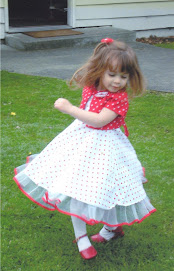Today I learned sometime new. That a lot of people haven’t been taught, and don’t think that ‘w’ is a vowel. This was sometime new to me. How this new thinking came about was my eight year old nephew informed me ‘w’ isn’t a vowel, and later my nine year old nephew informed me of this again during a phone conversation tonight.
In all the schools that I went to as a child (all of my elementary years were in TX and CA) and teaching phonics to Kindergarteners and 1st graders in Idaho for many years this was the way we sang the song; ‘The vowels are A,E,I,O,U and sometimes Y and W'. I went to many google sites and found a big debate about this. I asked Kit (my friend) today and she said the song she learned didn’t add the ‘w’, and everyone that I ask today who were schooled in Washington said the same. This is very interesting to me. But with learning different languages you learn the difference between, 'Monophthong, Diphthong, Triphthong, and Semivowel' in these ‘aw', ‘ew’, and ‘ow’ the ‘w’ is a vowel.
Here are a few things I found on google; Is ‘w’ a vowel? Today I was amazed that different people are being taught different things. This seems like a pretty heated subject. I guess it’s not that important if educators don’t agree.
http://www.englishforums.com/English/WhenIsWAVowel/mwbn/post.htm
MY CHILDREN ARE BEING TAUGHT THAT "W" IS A VOWEL. I NEVER REMEMBER THIS GROWING UP AND WAS NEVER TAUGHT IT IN COLLEGE. PLEASE HELP, CYNDI
Reply:
It is probably part of a particular way of teaching reading. I wouldn't get too excited about it.
Strictly speaking, we can never see vowels, so that "W" sitting there on the page is not a vowel and neither is this "A". We can only hear vowels. Vowels are sounds. Loosely speaking, the vowel letters A, E, I, O, and U are often called vowels. "Y" and "W" may or may not be included among the vowels, depending on the teaching method. The typical sound we make (in English) when we see the letter "W" is called either a semi-vowel, a semi-consonant, or a glide. The same terminology can be used to describe the sound of "Y" in the word "Yes". The sound of the "Y" is a front glide related to the sound "EE" (bee) and the sound of the "W" is a back glide related to the sound "OO" (boo). A good reason to include Y and W as vowels (vowel letters, actually) is that they pair with other vowel letters to create digraphs which have characteristic sounds. "AY", "EY", "OY", "AW", "EW", "OW". But when not at the end of a word, these are "AI", "EI", "OI", "AU", "EU", "OU". (Of course there are exceptions. That's how English is!) Because Y and I form a pair that substitute for each other, and W and U also, it's not such a bad idea to include both when introducing the concept to children. Hope that helps!
http://www.angelfire.com/biz/valderbooks/lesson6.html
Teach A Child To Read
SUBSTITUTE VOWELS
It is finally time to introduce the substitute vowels. We simply tell the children that Y and W can sometimes be vowels.
When is W a vowel?
When w follows o, and the o says it's name, the w is acting like a vowel (follows double vowel rule above).
In these words: cow, town, brown, etc., w is a consonant.
In these words: tow, low, bowl, etc., w is a vowel. Notice the o is long and the w is silent.
Like the oo words, we don't fuss over the difference, but just practice some words and let the child get used to them.
When is Y a vowel?
Y acts as a vowel when it comes at the end of a word. It follows the double vowel rule in words that end with the following:
Words ending in -ay have the long a sound, such as pay, May, play, etc.
http://en.wikipedia.org/wiki/Vowel#Monophthongs.2C_diphthongs.2C_triphthongs
Written vowels
Main article: Writing system
The name "vowel" is often used for the symbols that represent vowel sounds in a language's writing system, particularly if the language uses an alphabet. In writing systems based on the Latin alphabet, the letters A, E, I, O, U, W and Y are all used to represent vowels, although not all of these letters represent vowels in all languages (some of them, especially W and Y, are also used to represent approximants); in addition, extensions of the Latin alphabet have independent vowel letters such as Ä, Ö, Ü, Å, Æ, and Ø.
http://www.straightdope.com/columns/read/499/is-it-true-w-can-be-used-as-a-vowel
Is it true "W" can be used as a vowel?
September 11, 1987
Dear Cecil:
In elementary school I remember the teacher telling me that the vowels were AEIOU and sometimes Y and W. But I can't think of a single word where W is used as a vowel. Are there any?
— Michael S., Baltimore
Dear Michael:
Sure. Try "how," which is phonetically equivalent to "hou," as in house. Ou and ow are diphthongs--that is, two vowel sounds that kind of slide together when you say them. W and Y are often called semivowels because they go both ways, as it were, depending on the company they keep within the word. (Low morals are obviously a problem at every level of our society.) In cow, for instance, W is a vowel, but make the word coward and you can hear W working as a consonant. Similarly with Y become I in copy and copier. I could also expound on the vowel-likes, yet another class of letters with an identity crisis, but I think we've had enough angst for one column already.
http://www.wisegeek.com/what-is-a-vowel.htm
Since a vowel refers to a specific type of sound, orthographically some letters may represent a consonant in some circumstances, and a vowel in others. In English we can see this with the letters y and w which are most often used to make consonant sounds, but can also be used to represent vowels. In the case of y, for example, we can compare its use in the words yonder and day. In the word yonder, it acts distinctly as a consonant, with the center of the tongue blocking the flow of air on one side by touching the palette of the mouth – as what is called a palatal approximant. In the word day, on the other hand, it is forming a vowel sound akin to if the word were written in English as dei.
In the case of w, we could look at the words woo and how. In the word woo, the letter is acting as a consonant, with the back of the tongue blocking the flow of air on one side by touching the palette of the mouth – what is called a labiovelar approximant. In the word how, it serves as a vowel, which could be represented in English writing as hao.
In English, there are five letters which always represent a vowel when written: a, e, i, o, and u. These five letters represent more than five vowel sounds, however, depending on the word, or if they are combined with other vowels. Compare the letter a in the words hat and hate as one of many examples.
http://www.librarything.com/topic/39850
Hope you don't mind if I ask a question that has bothered me for some time. When did elementary schools stop teaching the vowels as "a,e,i,o,u and sometimes y and w." My children (16,15,and 7) have just learned "a,e,i,o,u and sometimes y." I hadn't thought of it before but maybe not all elemetary schools in the 70's taught the W as mine did.
There are a lot of different opinions out there! ~ Cindy
Friday, November 21, 2008
Subscribe to:
Post Comments (Atom)


2 comments:
1000 facebook likes
buy facebook likes
http://www.sanduskyregister.com/registercam http://www.chinariversproject.org/?q=node/101
get facebook likes get facebook likes buy facebook likes
Recently, my clipta.com toolbar seems to be malfunctioning. Whenever I want to download a video, it only allows me to download a small portion of a video - say, I wanted to download a 99MB video, I was only able to download about an eighth of it. I do not know what is happening, but I have also been experiencing from strange redirections - when I click on a link from a Google Search, I get redirected all the time to another page completely, and I have to go back and do it a few times before it works, sometimes. Could it be a trojan or a virus or something? - because all my troubles started, I think (but I'm not that sure) when I downloaded a .exe file. When I opened it, it didn't work. My security software detected a threat, and labelled it as "High" in risk level. Changes, according to my Internet Seurity Software, have also been made to my system files. It also seems that it may be a trojan horse. Could this be linked to my inability to download FULL versions of videos using my clipta.com toolbar? I use Mozilla Firefox (v. 3.5.5). Or could there just be a bug in Firefox or my clipta.com toolbar? I need a a solution to my problem.
1000 facebook likes buy facebook likes [url=http://1000fbfans.info]facebook likes [/url] buy facebook likes
hermes beltsBags Hermes bxtm 2013 Hermes Bags2013 Hermes Bags iwlp
Post a Comment